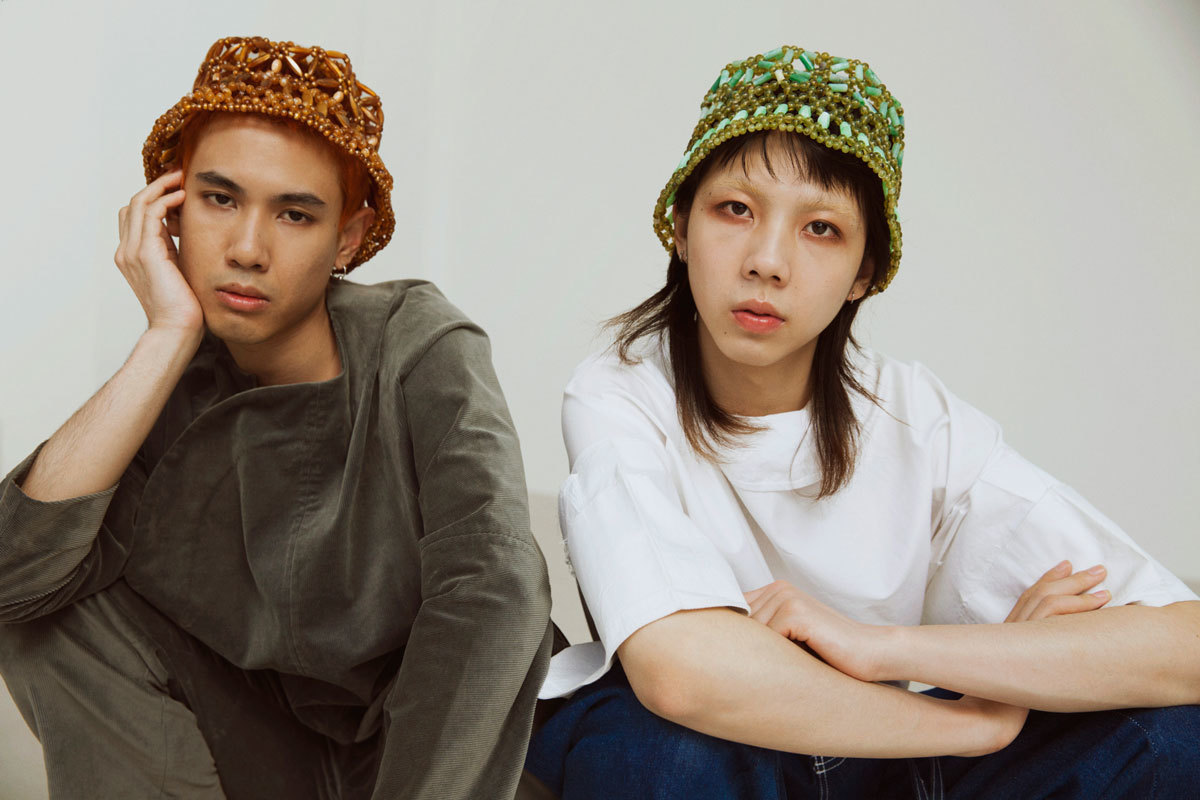“When Onying and I met, we were both in the mindset of looking for something creative,” Jason Mui — who grew up in Birmingham and moved to Hong Kong in 2010 — explains. “There was nothing going on here that was similar to what we wanted to do, so we realised we would have to do it ourselves.” Onying had returned to Hong Kong after studying in London, where she earned an MA in fashion design at Central Saint Martins.
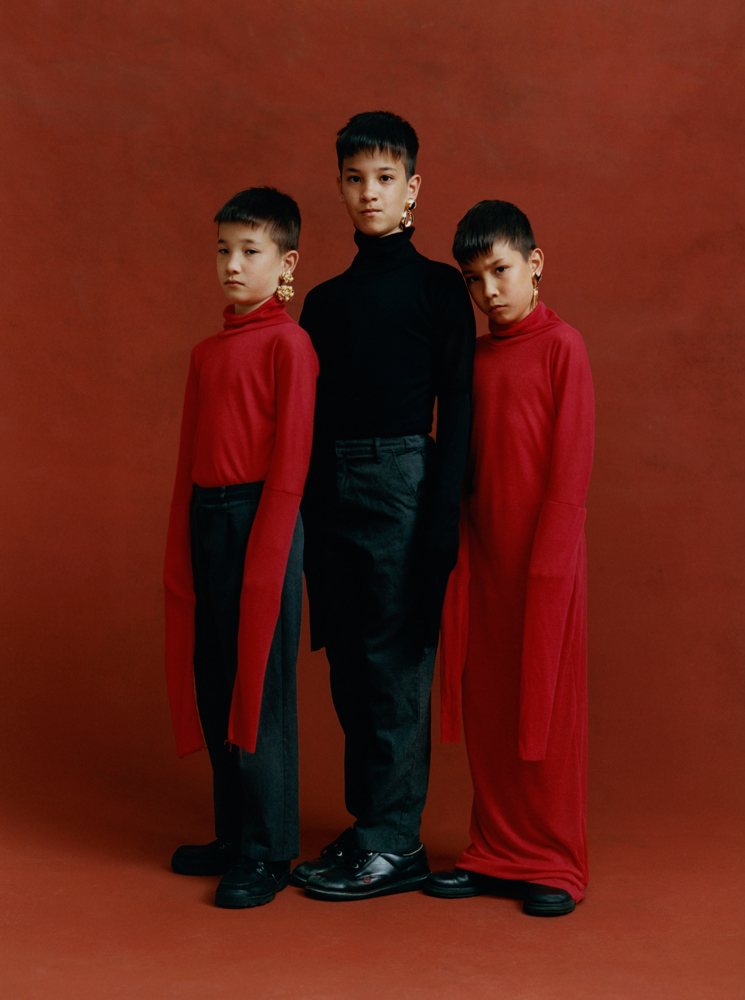
Launched in 2015, Yat Pit’s first collection was photographed by the late Ren Hang, and showed at Shanghai Fashion Week, where Opening Ceremony picked the duo up. The designer’s studio currently doubles as Jason’s home, with a shy tabby cat named Mui Mui and a tank of shimmering goldfish that sits beside a traditional Chinese shrine. The space is stylish and eclectic, but still very Hong Kong – when we sit down to speak, we share a pot of Chinese tea and local hawthorn sweets.
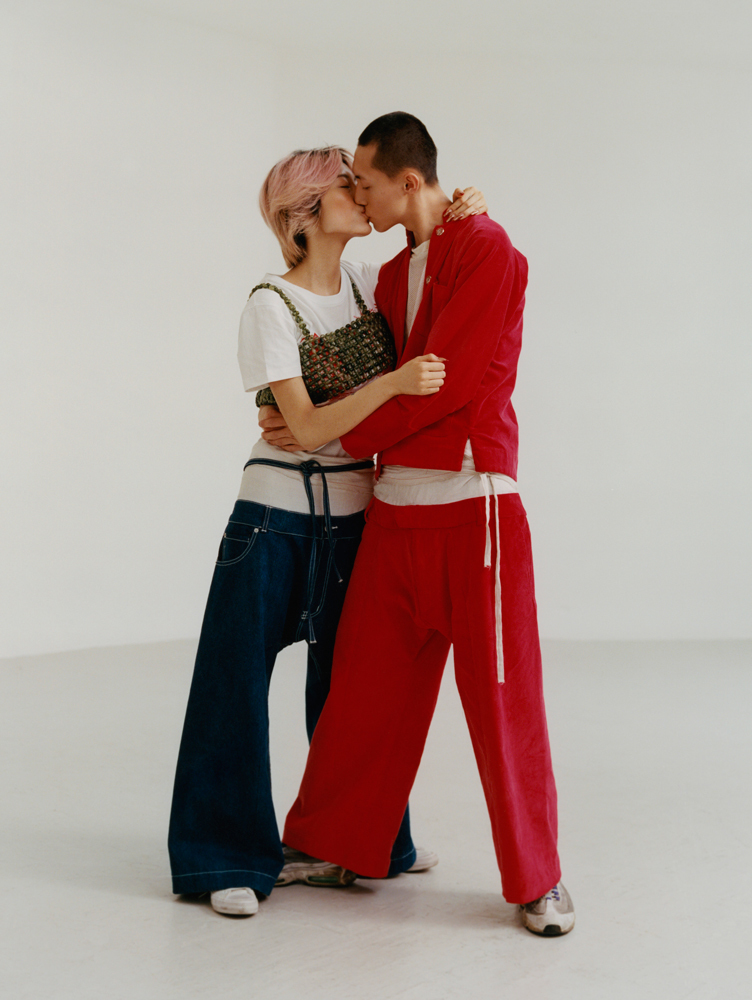
The key to the brand’s originality and success is the duo’s shared cross-cultural perspective. But Yat Pit — which means ‘one stroke’ or ‘first start’ in Cantonese — began with only a loose sense of the “lost Chinese-ness” that would end up at the core of their designs. “We didn’t start out doing anything Chinese or traditional,” says Onying. “It was a slow, natural, organic process to get to where we are.” That journey started with a visit to Onying’s dad, who one day, says Jason, “pulled out Onying’s great-great-grandparents’ traditional clothing, which was all hand sewn. It was amazing.” At around the same time, Hong Kong was rocked by an epic 79-day protest known as the Umbrella Revolution, which ground the city to a halt and, for many, brought up fears of an authoritarian crackdown from Beijing.
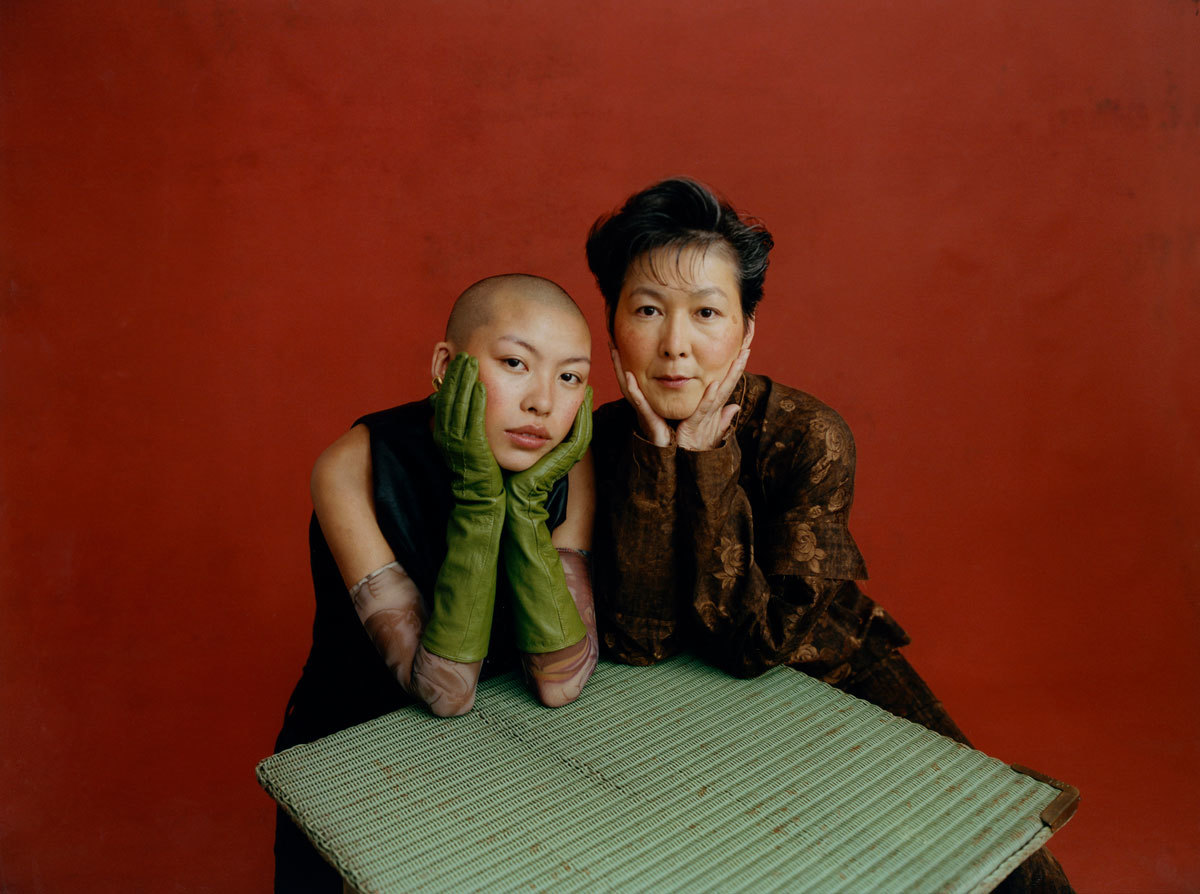
“It was like an outburst,” says Jason. “It really made you question what it means to be Chinese, and brought up thoughts about the Cultural Revolution. We realised that’s what we were doing – reviving a lost Chinese-ness.”While the designers seek to re-imagine 20th-century China through fashion, Onying explains that their approach is more cultural than political.
The studio is in Sham Shui Po, a traditionally working class but slowly gentrifying area. Jason says, “We love Hong Kong’s vernacular. People think Sham Shui Po is a little bit rough, but that’s where all the great stuff comes from. People here have to make do, they have to DIY, they have to fix their shoes and fix their bags. They don’t just buy new stuff to replace what they have.”
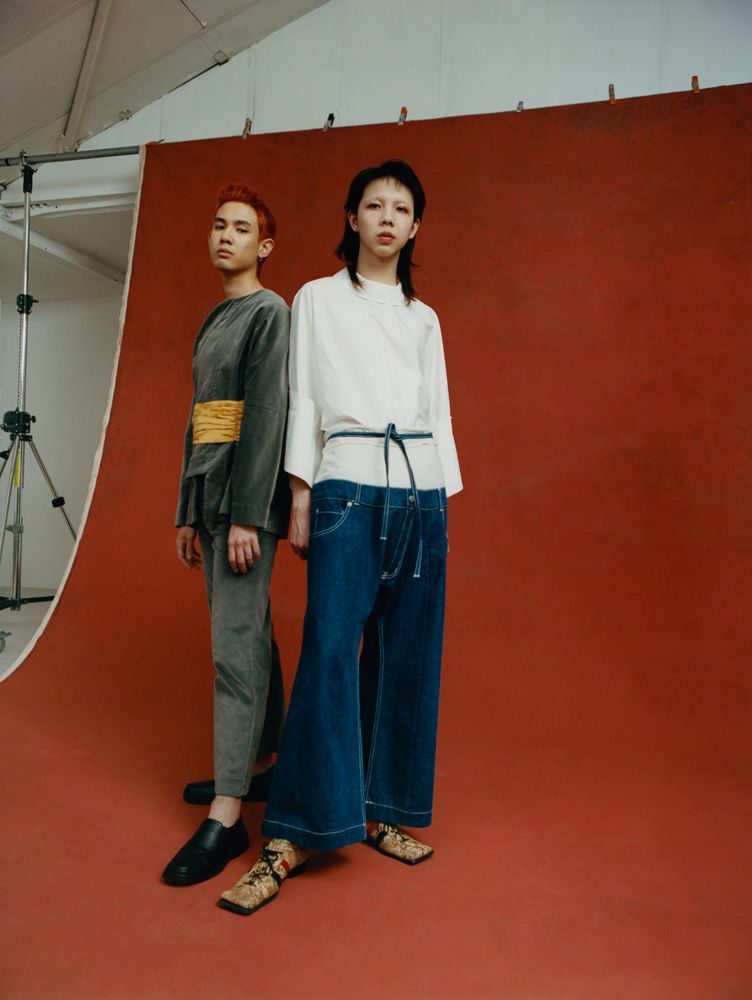
This sense of pragmatism coupled with invention has had a huge influence on the brand. Steeped in a palette of patriotic reds, accentuated by traditional Chinese fastening, the Yat Pit aesthetic may be described as nostalgic with a modern, androgynous twist. Think oversized tunics, wide denim pants, beaded bucket hats, baggy tees, corduroy jackets, and matching corduroy pants.
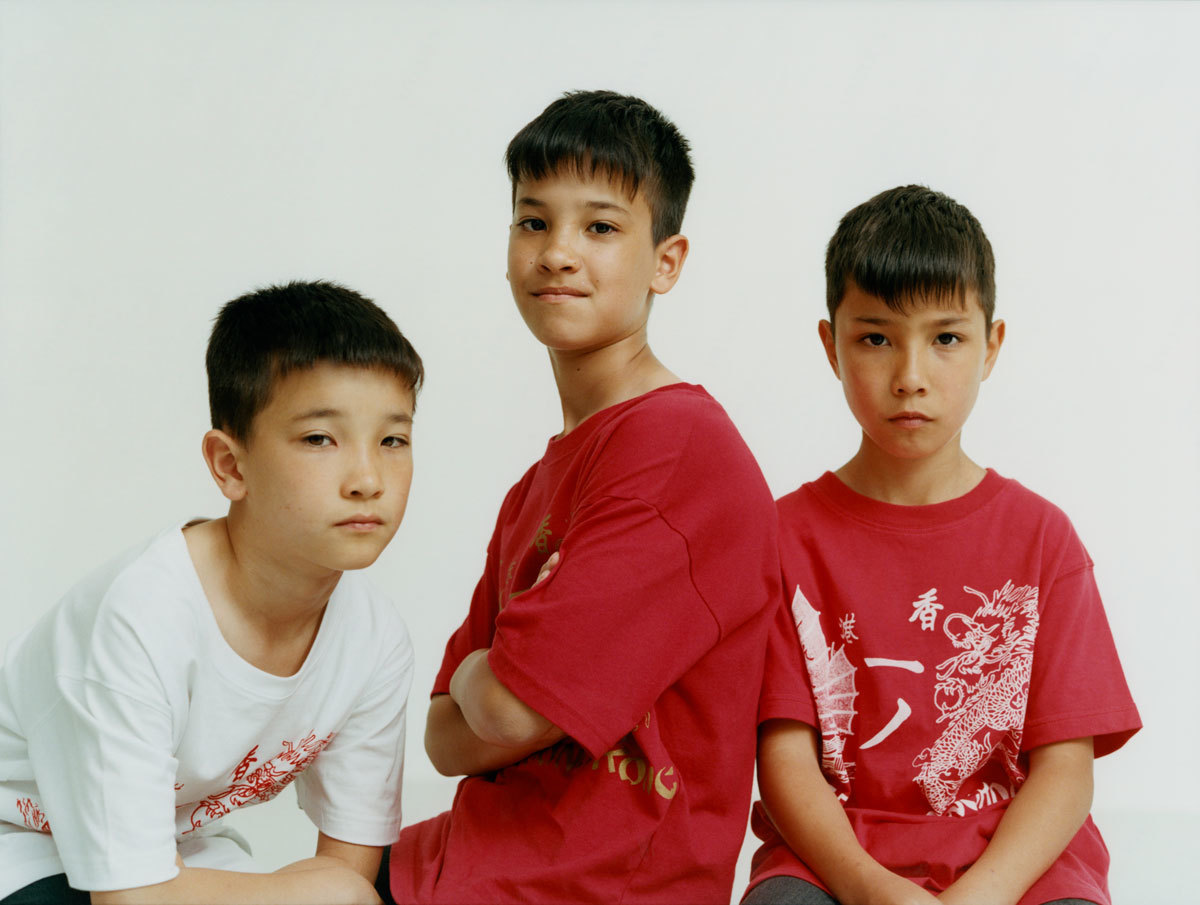
Most of Yat Pit’s sales are made by word of mouth – Shrugging off the “suffocating” demands of fast fashion for a more natural pace has allowed them to develop a dialogue with friends and customers, who come directly to the studio and who often leave with semi-bespoke pieces crafted over long afternoon chats. “You really meet like-minded people that way, and we love to see them wearing our clothes,” says Jason.
At home, however, Yat Pit’s designs have not always met with approval. “I wore a silk piece back for Chinese New Year and I could see my nan was fuming,” says Jason with a warm laugh. “She thinks of it as a poor man’s material.” His granddad is more understanding: “He will tell me stories of the Cultural Revolution, and I’ll be sitting there taking notes about what they used to wear.”
In starting the label, Jason has achieved something more profound than a fresh, hip take on Chinese fashion. He has discovered his roots: “My upbringing in Birmingham was really white, you know, I felt like a white kid. I didn’t even know I was Chinese. Now I feel proud of it,” he pauses – it’s difficult to explain. “I feel like I’ve found myself.”
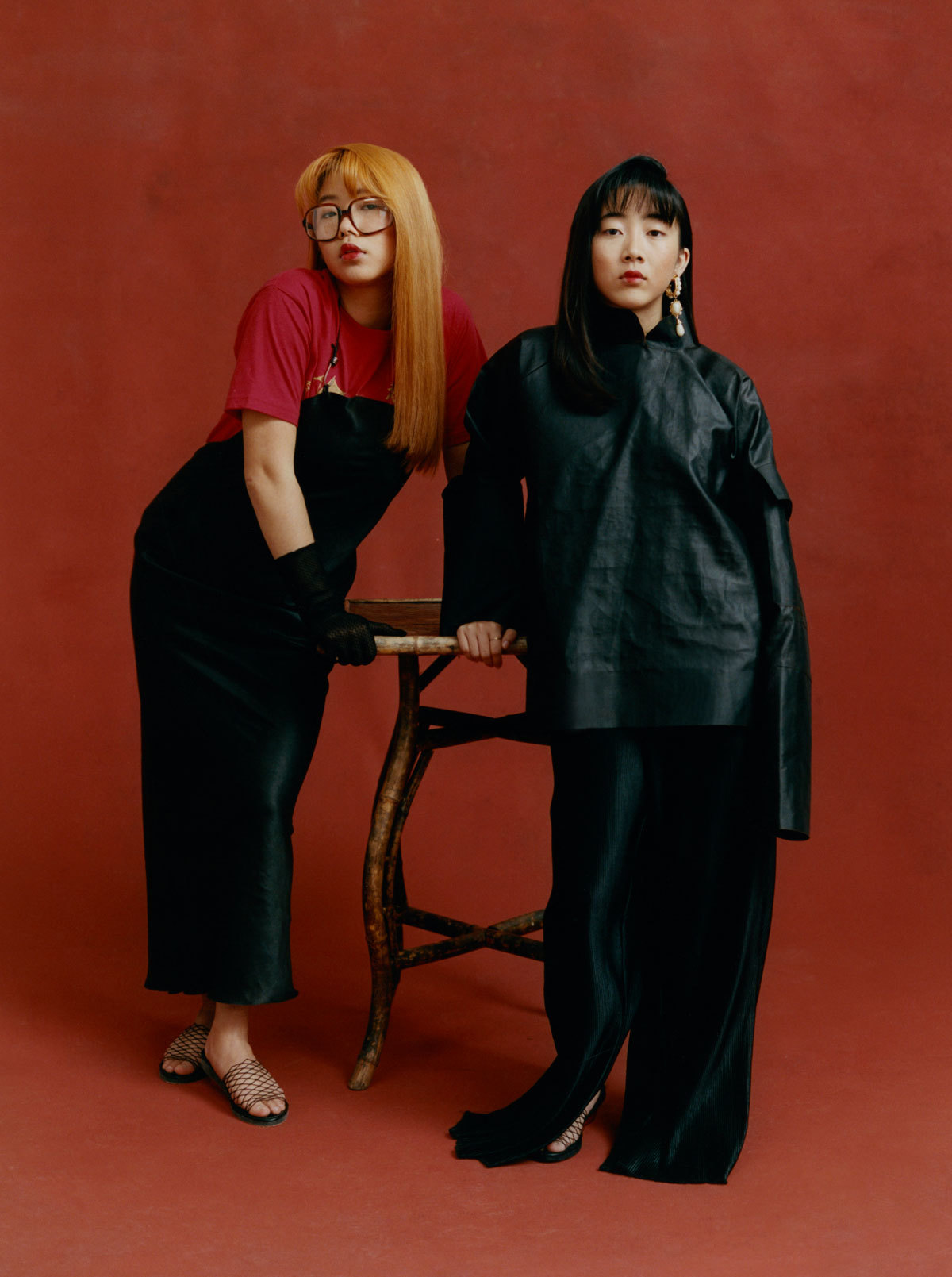
Credits
Text Samantha Leese
Photographer Alexandra Leese
Assistants Andras Bartok, Meshach Roberts
Stylist Charlotte Roberts
Assistant Iris Chalangeas
Hair Shiori Takahashi
Make-up Gina Blondell using Nars
Assistant Lauren Baldwin
Set Design Danny Hyland
Models Tiffany and her mum Nicole
Brothers Eben, Zephyr and Phoenix,
Sisters Joey and Yan
Friends Louis and Strong
Couple Kat and Picasso
